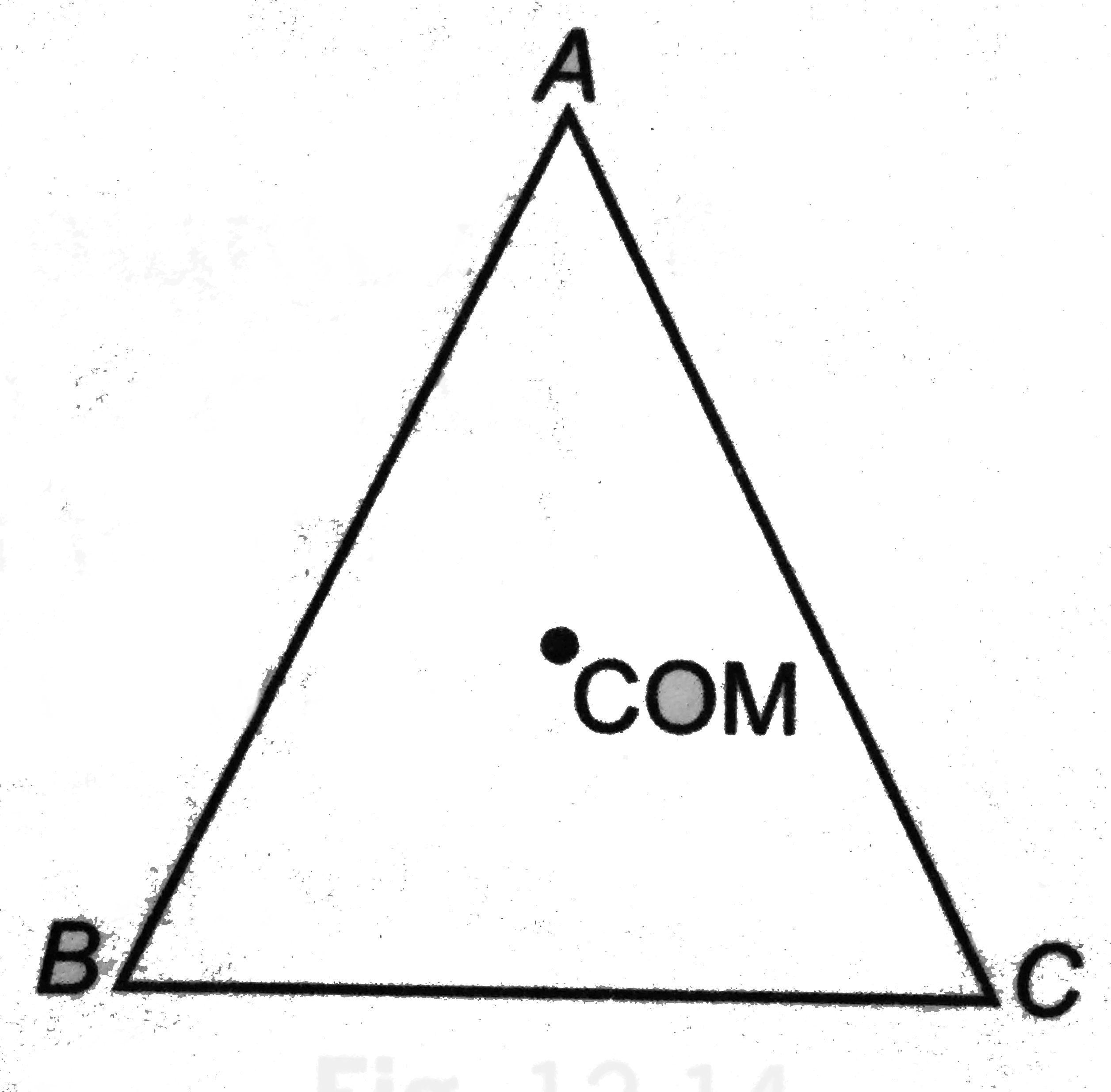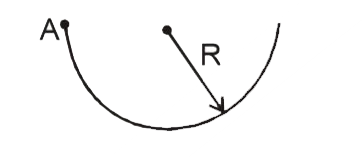Three uniform rods, each of length 21 ( = 1m) and mass M = 8 kg are rigidly joined at their ends to form a triangular framework. Find the moment of inertia of the framework about an axis passing through the midpoints of two of its sides?
To find the moment of inertia of the triangular framework formed by three uniform rods about an axis passing through the midpoints of two of its sides, we can follow these steps:
Step 1: Understand the Configuration
We have three uniform rods, each of length l=1m and mass M=8kg, forming an equilateral triangle. The axis of rotation is through the midpoints of two sides of the triangle.
Step 2: Identify the Length of the Sides
Since each rod is of length 1m, the sides of the equilateral triangle formed will also be a=1m.
Step 3: Find the Perpendicular Distance from the Axis
The axis passes through the midpoints of two sides. The distance from the axis to the center of mass of the third rod (which is perpendicular to the axis) needs to be calculated. For an equilateral triangle, the height h can be calculated as:
h=√32a=√32×1=√32m
The distance from the axis to the center of mass of the third rod is:
d=h2=√34m
Step 4: Calculate the Moment of Inertia for Each Rod
1. For Rod 1 and Rod 2 (which are aligned along the axis):
The moment of inertia of a rod about an axis through its center is given by:
I=112Ml2
For each rod:
I1=I2=112×8×(1)2=812=23kg m2
2. For Rod 3 (which is perpendicular to the axis):
The moment of inertia about an axis parallel to one end of the rod is:
I=13Ml2
Using the parallel axis theorem:
I3=13Ml2+Md2
Substituting the values:
I3=13×8×(1)2+8(√34)2
I3=83+8×316=83+32
Converting to a common denominator (6):
I3=166+96=256kg m2
Step 5: Total Moment of Inertia
Now, sum the moments of inertia of all three rods:
Itotal=I1+I2+I3=23+23+256
Converting 23 to sixths:
Itotal=46+46+256=336=5.5kg m2
Final Answer
The moment of inertia of the triangular framework about the specified axis is:
5.5kg m2
We have three uniform rods, each of length l=1m and mass M=8kg, forming an equilateral triangle. The axis of rotation is through the midpoints of two sides of the triangle.
Since each rod is of length 1m, the sides of the equilateral triangle formed will also be a=1m.
The axis passes through the midpoints of two sides. The distance from the axis to the center of mass of the third rod (which is perpendicular to the axis) needs to be calculated. For an equilateral triangle, the height h can be calculated as:
h=√32a=√32×1=√32m
The distance from the axis to the center of mass of the third rod is:
d=h2=√34m
1. For Rod 1 and Rod 2 (which are aligned along the axis):
The moment of inertia of a rod about an axis through its center is given by:
I=112Ml2
For each rod:
I1=I2=112×8×(1)2=812=23kg m2
The moment of inertia about an axis parallel to one end of the rod is:
I=13Ml2
Using the parallel axis theorem:
I3=13Ml2+Md2
Substituting the values:
I3=13×8×(1)2+8(√34)2
I3=83+8×316=83+32
Converting to a common denominator (6):
I3=166+96=256kg m2
Now, sum the moments of inertia of all three rods:
Itotal=I1+I2+I3=23+23+256
Converting 23 to sixths:
Itotal=46+46+256=336=5.5kg m2
The moment of inertia of the triangular framework about the specified axis is:
5.5kg m2
Topper's Solved these Questions
- BOOK - VMC MODULES ENGLISHCHAPTER - SYSTEM OF A PARTICLES & ROTATIONAL MOTIONEXERCISE - SOLVED EXAMPLES20videos
SYSTEM OF A PARTICLES & ROTATIONAL MOTION
- BOOK - VMC MODULES ENGLISHCHAPTER - SYSTEM OF A PARTICLES & ROTATIONAL MOTIONEXERCISE - PRACTICE EXERCISE-14videos
SYSTEM OF A PARTICLES & ROTATIONAL MOTION
- BOOK - VMC MODULES ENGLISHCHAPTER - SIMPLE HARMONIC MOTION EXERCISE - 7-previous year question46videos
SIMPLE HARMONIC MOTION
- BOOK - VMC MODULES ENGLISHCHAPTER - SYSTEM OF PARTICLES AND ROTATIONAL MOTIONEXERCISE - IMPECCABLE56videos
SYSTEM OF PARTICLES AND ROTATIONAL MOTION
Similar Questions
The moment of inertia of a cube of mass M and edge length a about an axis passing through one of its edge is
View SolutionThree identical thin rods, each of mass m and length l, are joined to form an equilateral triangular frame. Find the moment of inertia of the frame about an axis parallel to tis one side and passing through the opposite vertex. Also find its radius of gyration about the given axis.
View Solution
Find the moment of inertia of the rod AB about an axis yy as shown in figure. Mass of the rod is m and length is l.View Solution
Three rods each of mass m and length l are joined together to form an equilateral triangle as shown in figure. Find the moment of inertial of the system about an axis passing through its centre of mass and perpendicular to the plane of the particle.View SolutionTwo masses m1andm2 are placed at a distance r from each other. Find out the moment of inertia of system about an axis passing through their centre of mass.
View Solution
Three rods each of mass m and length l are joined together to form an equilateral triangle as shown in figure. Find the moment of inertial of the system about an axis passing through its centre of mass and perpendicular to the plane of the particle.View SolutionTwo uniform, thin identical rods each of mass M and length l are joined together to form a cross. What will be the moment of inertia of the cross about an axis passing through the point at which the two rods are joined and perpendicular to the plane of the cross ?
View SolutionTwo rods each of mass m and length 1 are joined at the centre to form a cross. The moment of inertia of this cross about an axis passing through the common centre of the rods and perpendicular to the plane formed by them, is :
View SolutionA uniform rod of mass m is bent into the form of a semicircle of radius R. The moment of inertia of the rod about an axis passing through A and perpendicular to the plane of the paper is
 View Solution
View SolutionA uniform rod of mass m is bent into the form of a semicircle of radius R. The moment of inertia of the rod about an axis passing through A and perpendicular to the plane of the paper is
 View Solution
View Solution

